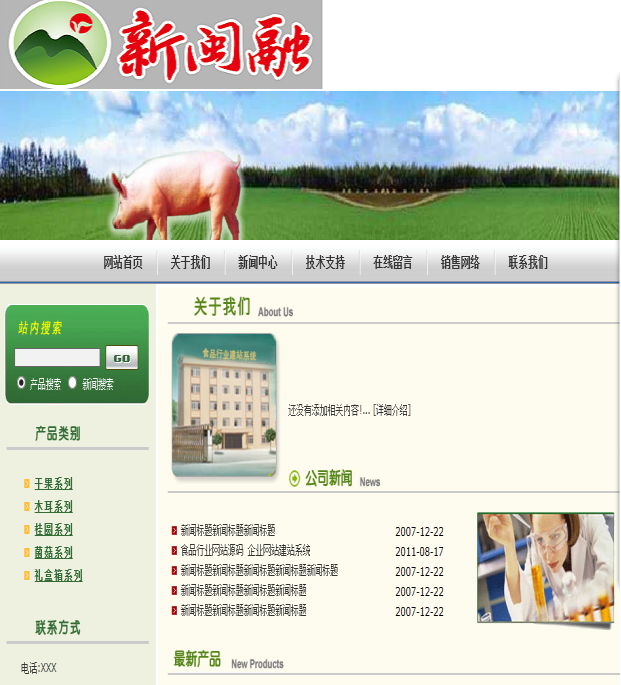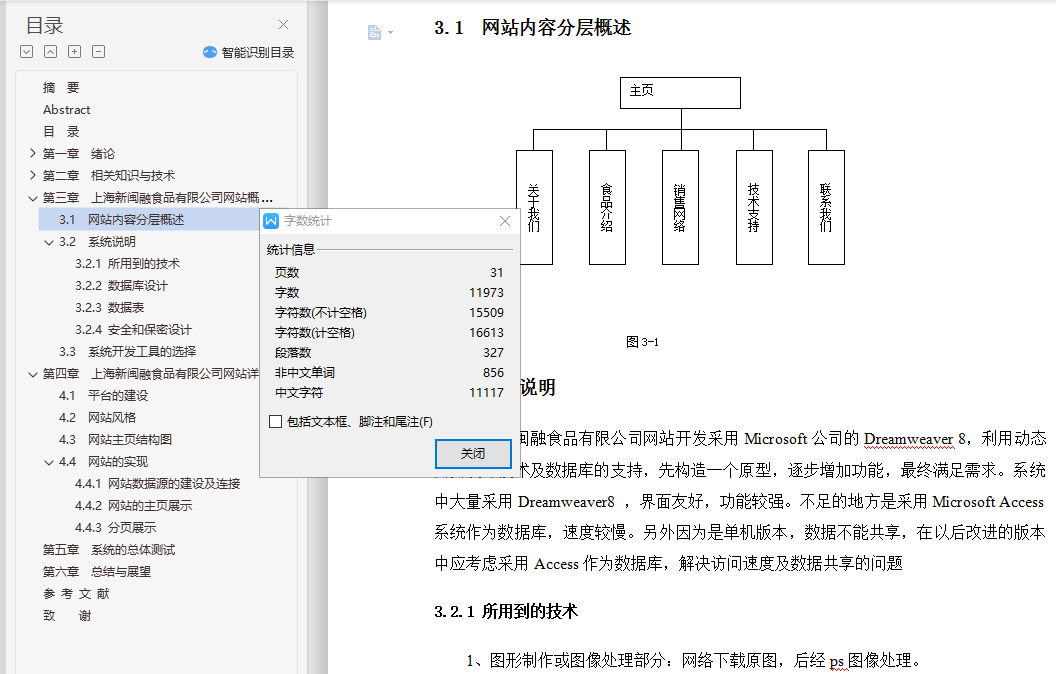摘 要
通过网站的建设发布,宣传其品牌食品。增强其品牌建设及产品推广。开发本网站的目的在于推广本商品名下的各种品牌食品,给用户提供一个便捷的信息交流平台,方便企业在最短时间内解决用户供求双方的需求,为双方搭建一个交流平台。
本系统采用的是基于面向对象的设计思想,阐述了利用面向对象和网站设计技术设计并构建了菜单,由其创建菜单对象组成菜单对象层,完成应用界面层和数据服务层之间的联系,体现三层客户机/服务器开发模式的思想;该系统利用这种结构的特点并结合面向对象技术,使得系统维护方便、易于扩充。该系统采用Dreamweaver技术为主要、微软 Access为后台数据库,完成了一个面向大众的上海新闽融食品有限公司网站的设计
本网站面向大众。本系统中主要有“关于我们”、“食品类别”、“销售网络”、“技术支持”、“新闻中心”、“联系我们”6个页面。
关键字:食品;网络;Access
Abstract
Through the construction site's publisher to promote its brand of food. Enhance its brand-building and product promotion. Purpose is to promote the development of the website of the trade name of various brands of food, to provide users with a convenient information exchange platform to facilitate business in the shortest possible time to solve the supply and demand sides of the user demand for the two sides to build a communication platform.
The system used is based on object-oriented design, and describes the use of object-oriented design techniques to design and build the website of the menu, its menu to create a menu object objects layer, to complete the application interface layer and the data link service layer, It reflects the thinking three-tier client / server development model; the system utilizes the characteristics of this structure and combining object-oriented technology, makes the system easy to maintain, easy to expand. The system uses technology as the main Dreamweaver, Microsoft Access as the backstage database, completed a public-facing Fujian Rong Food Co., Ltd. Shanghai New Website Design
The website for the general public. The system has major "About Us", "Food category", "sales network", "Technical Support", "News", "contact us" page 6.
Keywords: food; network; Access
目 录
摘 要 I
Abstract II
目 录 III
第一章 绪论 1
1.1 网站背景 1
1.2 编写目的 1
1.3 休闲食品的历史 1
1.4 中国人聚集点的休闲食品 2
第二章 相关知识与技术 4
2.1 Dreamweaver简介 4
2.2 Dreamweaver 8基本介绍 5
2.2.1 软件功能 5
2.2.2 界面面板 7
2.2.3 系统要求 8
2.3 数据库技术 9
2.4 网络技术 10
2.5 技术支持 11
第三章 系统的概要设计 12
3.1 网站内容分层概述 12
3.2 系统说明 12
3.2.1 所用到的技术 12
3.2.2 数据库设计 13
3.2.3 数据表 13
3.2.4 安全和保密设计 14
3.3 系统开发工具的选择 14
第四章 系统的详细设计 15
4.1 平台的建设 15
4.2 网站风格 15
4.3 网站主页结构图 16
4.4 网站的实现 17
4.4.1 网站数据源的建设及连接 17
4.4.2 网站的主页展示 18
4.4.3 分页展示 19
第五章 系统的总体测试 21
第六章 总结与展望 23
参 考 文 献 24
致 谢 25





